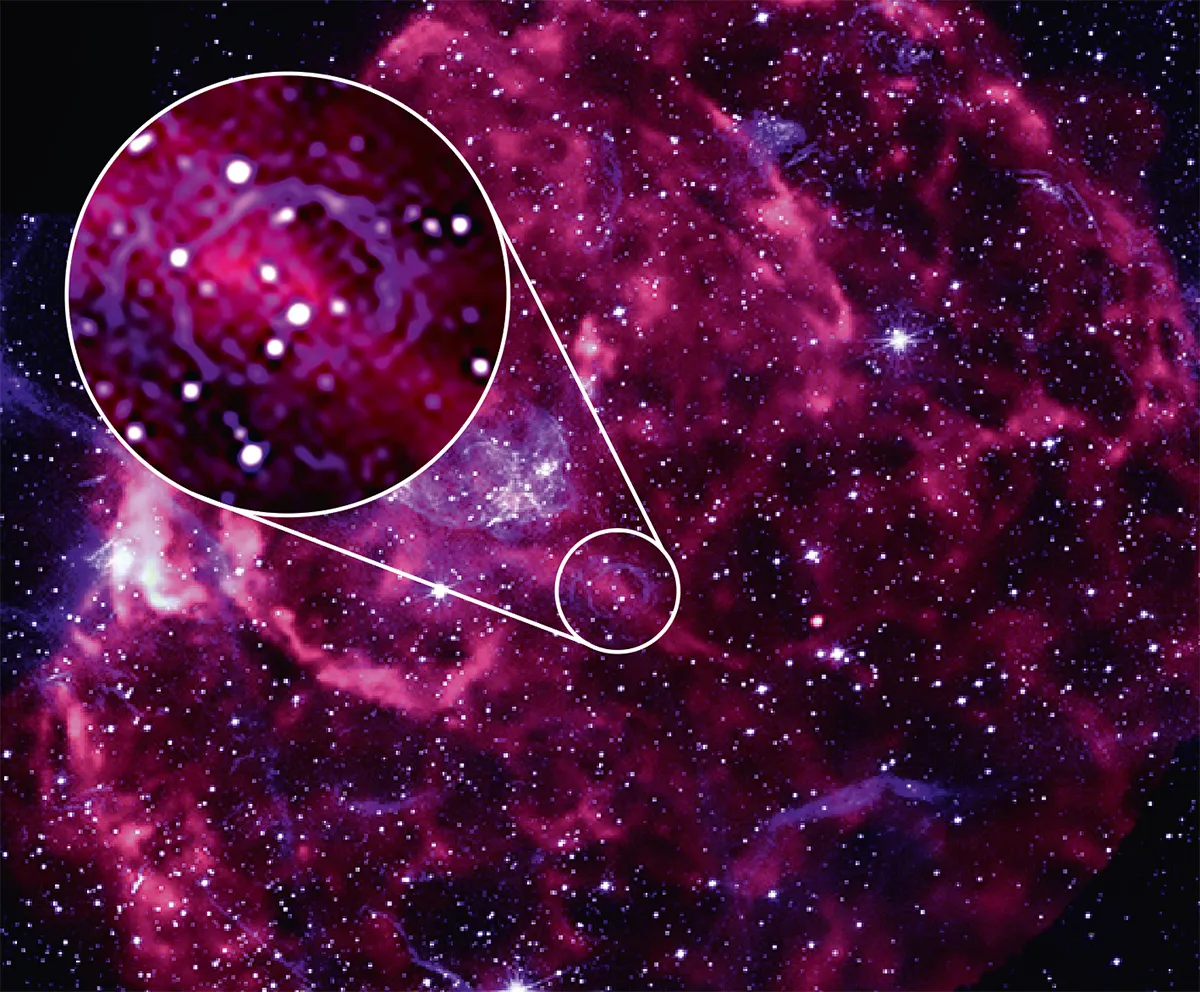The Puppis A supernova remnant is one of the most intriguing and interesting objects in the sky.
Slightly overlooked because it’s partly hidden behind the nearer Vela remnant, it is the result of an explosion whose light reached Earth about 3,700 years ago.
Since then, the bubble of shocked gas has expanded to a diameter of about 100 lightyears, at the centre of which is one of the brightest X-ray sources in the entire sky.
Of particular interest is what lies within the main body of the Puppis A supernova remnant.

The mystery of the Swirl
In images taken in both X-ray and visible light, there is a set of nested and overlapping rings.
Named ‘The Swirl’ by its discoverer Frank Winkler (making it the object in the sky which most sounds like something a Star Trek captain would encounter), it was originally thought to be the signature of a second supernova taking place within the remnant of the first.
But there is a science paper that takes a close look at the Swirl and comes to a different conclusion.
The authors argue that the Puppis A supernova remnant remnant is actually being sculpted by the presence of a second star, a companion to the supernova progenitor, whose influence on the initial explosion is being revealed all these millennia later.
The tool of choice is an integral field spectrograph, mounted on the 2.3-metre telescope at Siding Spring Observatory in Warrumbungle National Park, New South Wales, Australia.
These instruments, which are slowly revolutionising professional astronomy, give not only an image of the target, but also a spectrum for each pixel within a grid.
This gives the team two for the price of one – they can study the image to get a sense of the structure of the Swirl, while the spectra tell us how its movements and composition change across the object.

Arguments for a hidden star
With data in hand, they consider whether the Swirl could be material spewed into space by a wind from the progenitor before it went supernova.
If this hypothesis is true, we’d expect the Swirl’s rings to be uniform, with no changes in composition from place to place.
Instead, different rings are made of different things: the outermost one is nitrogen-rich, while inner components show oxygen and sulphur too.
As massive stars reach the end of their lives, they end up with an onion-like interior, their ‘burning’ of nuclear fuel producing layers of different heavy elements.
The pattern seen in the Swirl corresponds to being made up of a series of these layers – though the pattern does break down slightly in the innermost components.
But why do we see a series of rings? This is where the presence of a companion comes in.
If such a star exists, it would have got in the way of material flowing outwards during the supernova, producing a funnel shape, which we see as the Swirl.
It’s an elegant explanation, but could the companion star have survived?
Recent searches using data from the European Space Agency’s Gaia satellite have found nothing, though the authors suggest a broader search might be needed.
As ever, understanding the complexity of these fascinating objects requires more observations.
Chris Lintott was reading The Peculiar Ejecta Rings in the O-Rich Supernova Remnant Puppis A: Evidence of a Binary Interaction? by Parviz Ghavamian et al.
Read it online at arxiv.org/abs/2310.00661
This article appeared in the December 2024 issue of BBC Sky at Night Magazine.
